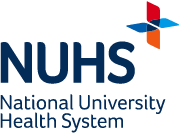MicroLaserPeel is a minimal to full epidermal laser peel that precisely removes the outermost layers of the skin. Conditions such as facial wrinkles, mild surface scars, skin discoloration and sun-damaged skin in delicate areas such as around the eyes and mouth have been very successfully treated with MicroLaserPeel.
MicroLaserPeel works by beaming laser energy that vaporizes the upper layers of damaged skin at specific and controlled levels of penetration. The superficial layer of skin is removed and the deeper layer of skin is exposed. Collagen is stimulated during the healing process and a smoother, tighter, younger-looking skin surface appears.
This technology dramatically rejuvenates skin with fewer risks than older lasers such as those featuring the CO2 laser resurfacing technology. This is because the depth of the resurfacing can be precisely controlled without causing scarring, prolonged or permanent light or dark discoloration. As it uses less heat, there is less redness, swelling and bruising compared to traditional laser peels, as well as fewer side effects or complications.
Since the Sciton Erbium laser displays little or no heat, dermal shrinkage (deeper tightening) does not occur. For deeper tightening, you may like to try using the Thermage procedure that is also available at our centre.
This procedure is relatively painful, as the ablative laser resurfacing removes the whole depth of the skin from the epidermis down to the dermis. Hence, anaesthesia is required for the procedure. The treatment usually takes between 20 and 30 minutes.
Patients will experience minor discomfort during treatment and recovery and the patient may have to rest for seven to ten days (procedure related downtime). The pain may last for one to four days depending on the depth of skin treated. After the procedure, the skin is typically red or pink and crusting may occur and last for one to four days. This pink skin may last from several days to a few months.

















